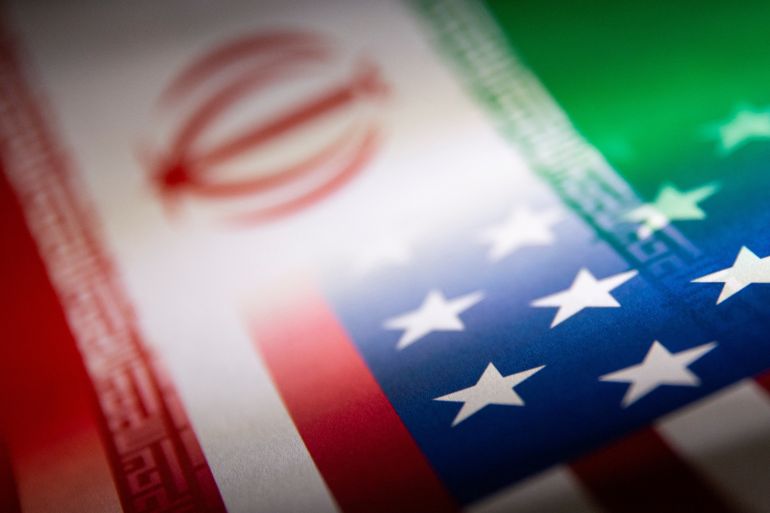
Iran News USA: Understanding the Complex Relationship
Introduction
The relationship between Iran and the USA is like a long, winding road filled with twists, turns, and unexpected detours. Over the years, these two countries have seen their fair share of conflicts, negotiations, and cultural exchanges. With recent events constantly reshaping this dynamic, it’s essential to stay informed. In this article, we’ll unpack the complexities of Iran’s news landscape as it pertains to the USA, covering everything from historical roots to modern-day implications.
Historical Context
Pre-Revolution Relations
Before the 1979 Iranian Revolution, Iran and the USA enjoyed a fairly cozy relationship. The U.S. supported the Shah’s regime, which led to significant economic and military aid wispotlight.com. Think of it as two old friends—one with deep pockets and the other with oil wealth. This partnership seemed beneficial until it didn’t.
The Iranian Revolution
Then came the revolution, flipping the script entirely. The overthrow of the Shah led to the establishment of the Islamic Republic, which saw the USA as a primary adversary. Suddenly, those old friends were bitter rivals, and the U.S. embassy takeover in Tehran cemented this animosity. The relationship, once friendly, turned into a classic tale of betrayal and distrust.
Current Political Climate
Key Players in Iran
Fast forward to today, and the political landscape in Iran is complex. With leaders like Supreme Leader Ayatollah Ali Khamenei and President Ebrahim Raisi at the helm, Iran’s policies often reflect a hardline stance against the West. It’s as if they’re playing a high-stakes game of chess where every move is calculated, and the stakes are incredibly high.
US Foreign Policy Shifts
On the U.S. side, foreign policy has fluctuated with each administration. From Obama’s attempts at diplomacy through the Iran Nuclear Deal to Trump’s withdrawal from the agreement and increased sanctions, each strategy has had profound impacts on the relationship. It’s like watching a seesaw—one side goes up while the other goes down.
Major Recent Events
Nuclear Negotiations
The nuclear negotiations have been a significant flashpoint. Efforts to curtail Iran’s nuclear ambitions have led to high-stakes talks, fraught with tension. Will they ever reach a deal? It feels like waiting for a season finale, with each episode leaving us on the edge of our seats.
Sanctions and Economic Impact
Sanctions imposed by the USA have significantly impacted Iran’s economy. Inflation has skyrocketed, and everyday Iranians feel the pinch. Imagine trying to make ends meet while prices soar—it’s a tough situation that often gets overlooked in the grand political discussions.
Media Coverage
Perspectives in the US Media
The U.S. media often portrays Iran in a light that emphasizes the negative aspects—nuclear threats, human rights abuses, and terrorism. This portrayal can skew public perception, making it difficult for Americans to see the nuanced realities of Iranian society.
Iranian Media Portrayal
Conversely, Iranian media tends to frame the USA as a looming threat, responsible for various regional instabilities. It’s a classic case of “us vs. them,” where each side shapes its narrative to rally public support.
Public Perception
American Views on Iran
Most Americans have a mixed understanding of Iran, shaped largely by media portrayals and political rhetoric. Many view Iran through a lens of fear and suspicion. But what about the average American? Would they feel differently if they understood more about Iranian culture and daily life?
Iranian Views on the USA
On the flip side, many Iranians see the USA as a symbol of both aspiration and frustration. There’s admiration for American culture and innovation, yet a strong sentiment against its foreign policies. It’s a complex love-hate relationship that adds layers to their interactions.
Cultural Exchanges
Arts and Sports
Despite political tensions, cultural exchanges between Iran and the USA persist. Artists, filmmakers, and musicians often find common ground. It’s like discovering an unexpected friendship in the unlikeliest of places, reminding us that culture can transcend politics.
Educational Programs
Various educational programs also foster understanding between the two nations. Students studying abroad often return with fresh perspectives that can bridge gaps. Imagine how much can be learned when people from different backgrounds share their stories over a cup of tea!
The Role of Social Media
Information Dissemination
Social media plays a crucial role in shaping opinions on both sides. Platforms like Twitter and Instagram allow real-time sharing of news and perspectives, breaking down barriers. It’s like a digital town square where voices can be heard, challenging traditional media narratives.
Activism and Advocacy
Activism has also found a stronghold on social media. Movements advocating for change within Iran often gain traction online, creating international awareness. It’s empowering to see people stand up for their rights and connect with supporters across the globe.
Future Outlook
Potential for Change
What does the future hold for Iran and the USA? There’s always hope for diplomatic breakthroughs, especially with shifting global dynamics. A renewed focus on dialogue could pave the way for a more stable relationship. It’s like planting seeds in a garden—some may flourish, while others might not take root.
Role of International Community
The international community also plays a role in this evolving relationship. Countries like China and Russia have their interests in Iran, complicating the situation further. Picture a crowded room where everyone is vying for attention; it can get chaotic!
Conclusion
In wrapping up our exploration of the Iran-USA dynamic, it’s clear that this relationship is anything but straightforward. History, politics, media, and culture all intertwine, shaping perceptions and interactions. Understanding this complex landscape requires more than just a glance at the headlines. It invites us to dive deeper, to listen, and to engage. As we move forward, let’s hope for more conversations and fewer confrontations, bridging the gaps that divide us and fostering a sense of shared humanity.

